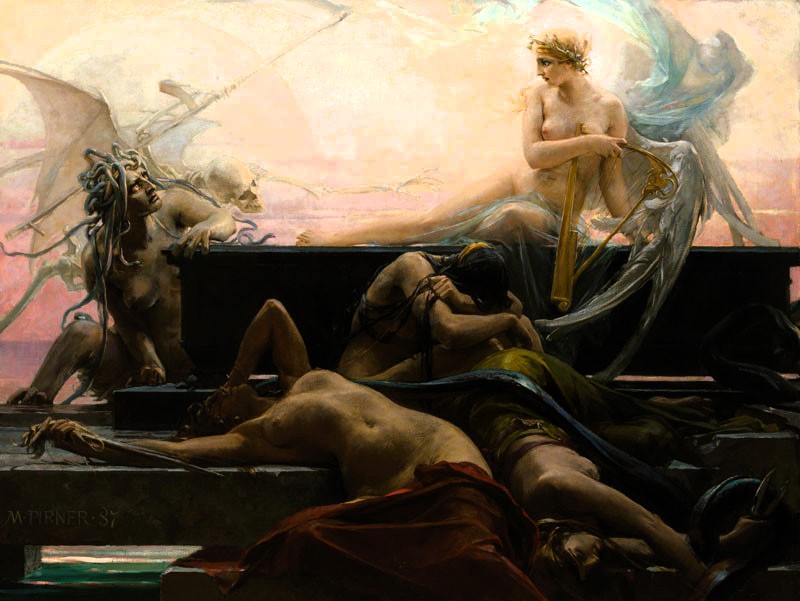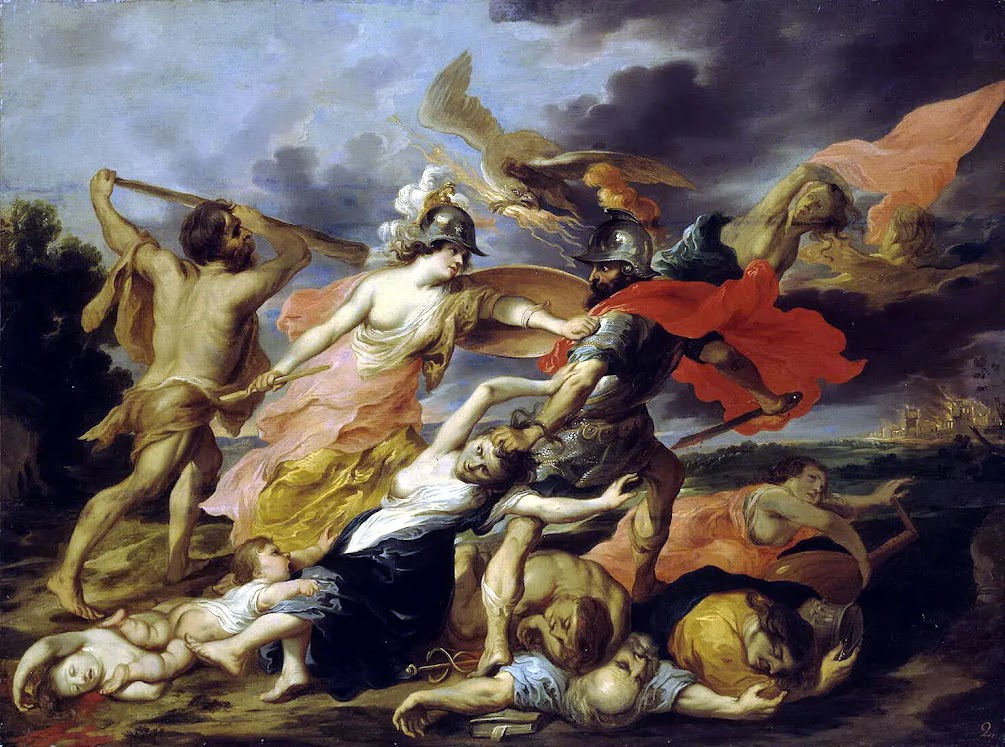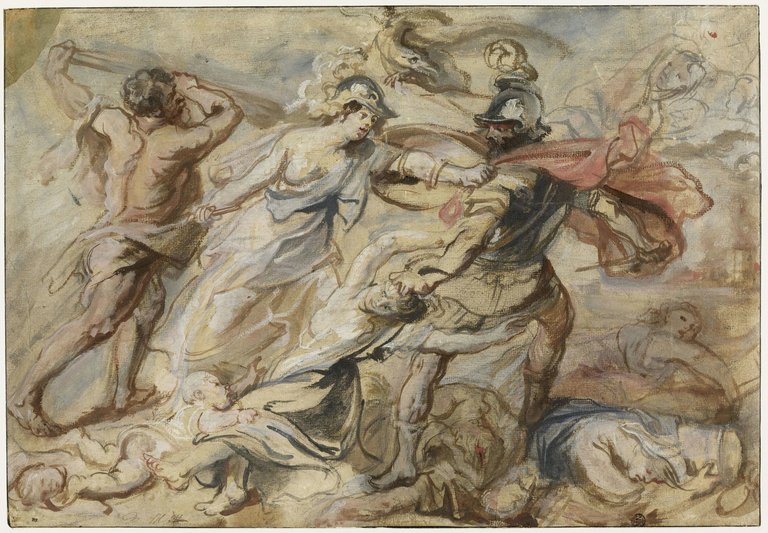Hans Thoma (2 October 1839 – 7 November 1924) was a German painter.
Hans Thoma was born on 2 October 1839 in Bernau in the Black Forest, Germany. He was the son of a miller and was trained in the basics of painting by a painter of clock faces. He entered the Karlsruhe Academy in 1859, where he studied under Johann Wilhelm Schirmer and Ludwig des Coudres – the latter of which had a major influence on his career. Thoma also studied under Hans Gude, but rebelled against Gude's realism. He subsequently studied and worked, with but indifferent success, in Düsseldorf, Paris, Italy, Munich and Frankfurt, until his reputation became firmly established as the result of an exhibition of some thirty of his paintings in Munich. He died in Karlsruhe in 1924 at the age of 85. More on Hans Thoma
Please visit my other blogs: Art Collector, Mythology, Marine Art, Portrait of a Lady, The Orientalist, Art of the Nude and The Canals of Venice, Middle East Artists, 365 Saints, 365 Days, and Biblical Icons, also visit my Boards on Pinterest
Images are copyright of their respective owners, assignees or others.
Some Images may be subject to copyright
I don't own any of these images - credit is always given when due unless
it is unknown to me. if I post your images without your permission, please tell
me.
I do not sell art, art prints, framed posters or reproductions. Ads are
shown only to compensate the hosting expenses.
If you enjoyed this post, please share with friends and family.
Thank you for visiting my blog and also for liking its posts and pages.
Please note that the content of this post primarily consists of articles
available from Wikipedia or other free sources online.





ENTOURAGE%20DE%20All%C3%A9gorie%20de%20la%20guerre.jpg)










